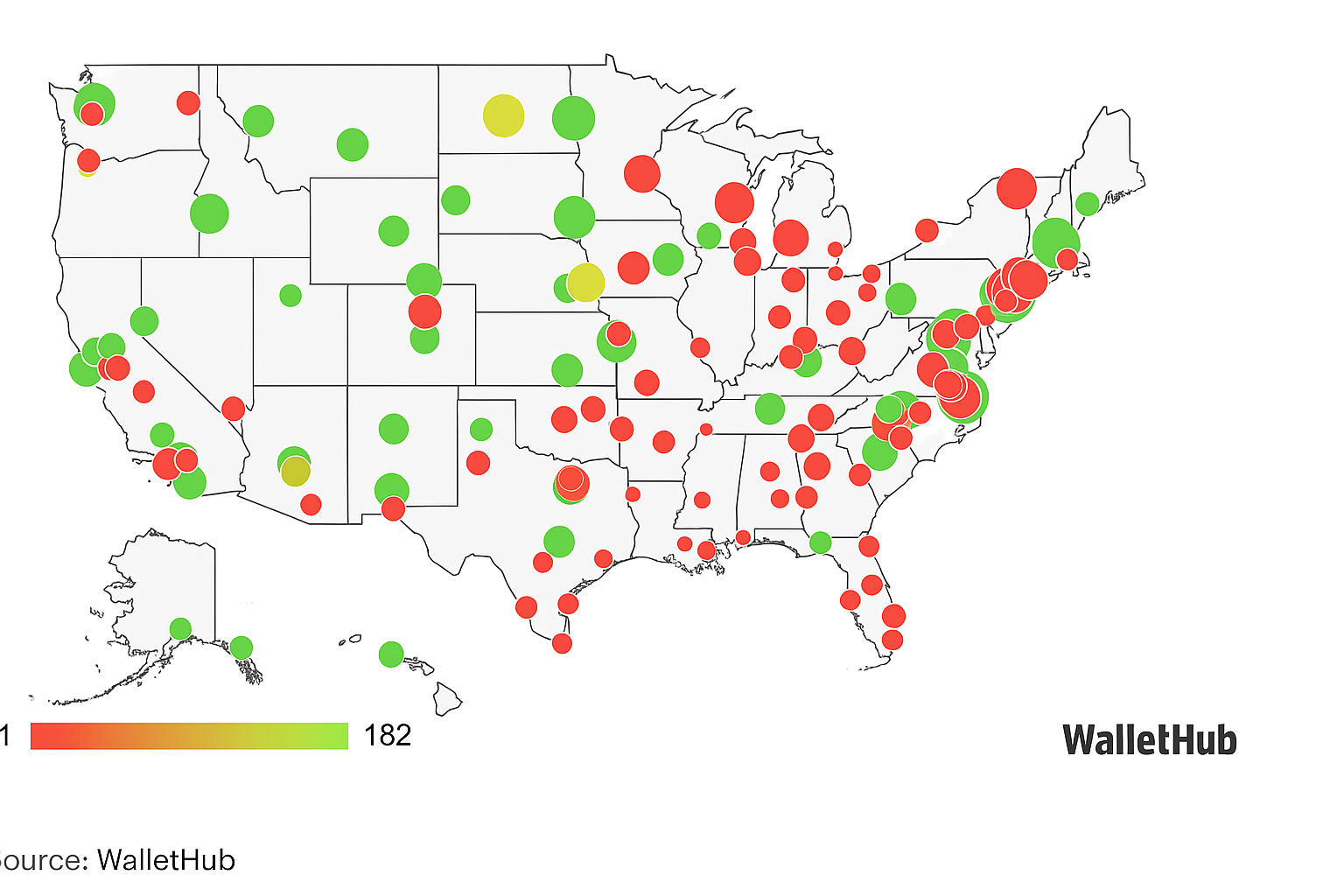- Health Conditions A-Z
- Health & Wellness
- Nutrition
- Fitness
- Health News
- Ayurveda
- Videos
- Medicine A-Z
- Parenting
- Web Stories
Measles Can Erase Your Immune System’s Memory—Here’s What That Means

Credits: Canva
As measles outbreaks rise again across the globe, scientists and health officials are sounding the alarm — not just about the virus itself, but a hidden side effect that could be even more dangerous: immune amnesia. This isn’t a metaphor. Measles has the terrifying ability to literally wipe out your body’s immune memory, undoing years of protection built up from past infections and vaccinations.
Measles was once considered largely defeated in many countries. Canada declared it eliminated in 1998. The U.S. was close behind. But in recent years, due to declining vaccination rates, pandemic-related disruptions, and growing vaccine hesitancy, cases are creeping back up.
Measles isn’t just a rash and a fever — it can cause pneumonia, blindness, brain inflammation, and even death. But its legacy may last far longer than the illness itself.
A growing body of research shows that after recovering from measles, many children and adults lose immune protection they had already built against other diseases like the flu, mumps, or even those they were vaccinated for. This phenomenon is called immune amnesia.
What Is Immune Amnesia?
Your immune system relies on memory to protect you. When you fight off an infection or get a vaccine, special cells (B and T lymphocytes) “remember” those pathogens so your body can quickly recognize and neutralize them in the future. Think of it like a security system keeping a watchlist of past intruders. Measles wrecks that system.
“Immune amnesia basically destroys your immune system,” explains Dr. Stephen J. Elledge, professor of genetics and medicine at Harvard Medical School, who has published extensively on the topic. “It infects and kills the cells that store immune memories — plasma cells, B cells, and T cells. It’s like burning down a library full of immunological knowledge.”
A 2019 study in Science, co-authored by Elledge, found that measles can wipe out up to 73% of a person’s immune memory. In other words, after recovering from measles, your immune system might not remember how to fight the flu, pneumonia, or other pathogens it once had under control. That puts you at risk for reinfections — even with diseases you already beat.
What makes immune amnesia so dangerous is how comprehensive it is. Unlike other viruses like influenza, which might weaken the immune system temporarily, measles erases learned immunity, setting your body back to a baby-like state.
The body will still remember how to fight measles (since it had to win that battle to survive), but all the rest — the defenses built from years of exposure and vaccination — could be gone. It can take two to three years to rebuild that immunity, according to a 2015 study, and that rebuilding relies on exposure or re-vaccination.
So, someone recovering from measles could remain vulnerable to severe infections for years — and not even know it.
How Immune Amnesia Affects The Body?
Every virus needs a doorway into the body’s cells. For measles, that doorway is a protein called SLAM, found on immune memory cells. Once the virus binds to SLAM, it infiltrates and destroys plasma cells — the very cells responsible for pumping out antibodies and maintaining immune memory.
It’s like a heist film where the thief knows the combination to the vault — and once inside, doesn’t just steal your valuables, but burns the blueprints so you can never secure the vault again. That’s what makes measles unique — and uniquely dangerous.
Virtually everyone who gets measles experiences some form of immune amnesia, though the extent varies. Children, especially infants under 12 months who aren’t yet vaccinated, are at highest risk. Their immune systems are still developing, and losing what little protection they’ve built can be devastating.
Older adults are also vulnerable because of natural immune decline with age. And anyone with existing health conditions or suppressed immunity could struggle even more to rebuild what the virus has wiped out.
How Vaccine Does More Than Prevent Measles?
Here’s the twist: the measles vaccine doesn’t just prevent measles — it may help strengthen the immune system overall.
Scientists have observed that vaccinated children have lower mortality rates not just from measles, but from other infections too. One theory is that by avoiding immune amnesia, the vaccine helps preserve the immune memory you’ve already built. Another is the non-specific effect — where live vaccines like the MMR (measles, mumps, rubella) train the immune system to better handle unrelated threats.
Either way, the MMR vaccine may be offering a broader shield than once thought.
One dose of the MMR vaccine, typically given at 12–15 months, is estimated to be 85–95% effective. A second dose (often at 4–6 years old) brings that protection close to 100%. And crucially, the vaccine does not cause immune amnesia — only the virus does.
In the 1960s, measles killed an estimated 2.6 million people annually worldwide. Thanks to vaccines, that number dropped drastically. Between 2000 and 2023, over 60 million deaths were prevented but in a world where many haven’t seen the true face of measles, complacency has crept in. Misinformation spreads. Anti-vaccine sentiment grows. And with it, so does the virus.
As of this year, outbreaks have been reported across the UK, Canada, and the U.S., especially in areas with low vaccine coverage. Public health agencies are now urging people to check their vaccination status — not just for themselves, but to protect their communities.
There’s a dangerous myth that measles is just part of growing up — a few days of rash and fever, then you’re done. That couldn’t be further from the truth.
Measles is a highly contagious, immune-erasing virus that can have life-threatening complications. It doesn’t just affect you while you’re sick. It leaves a trail of destruction inside your immune system that can take years to recover from — if ever. Vaccines don’t just protect against measles. They preserve everything your immune system has learned — and may even make it stronger.
The Overlooked Role of Men in IVF: Why Their Silent Strength Is Key to Fertility Success

When couples begin the IVF journey, much of the focus understandably rests on the woman. She undergoes the treatments, endures the physical toll, and often voices the emotional struggles. But the man’s quiet role deserves more credit than it gets. While women express their emotions openly, men often take a more grounded approach. Their silence is not always a sign of suppression. It is frequently a choice grounded in calm, a way of creating emotional space so that the couple can move forward with clarity and purpose.
Acceptance, Not Resignation
According to Dr Seema Jain, Department of Fertility at Cloudnine Group of Hospitals, Pune, acceptance is not about giving up. “Not passivity, not resignation, but a grounded understanding of what is and a steady willingness to walk the journey as it comes," she says.
This attitude creates emotional stability. While one partner may spiral into worry about test results or possible outcomes, men often hold the fort. By staying calmly optimistic, men often give the couple room to breathe and move forward.
The Practical Backbone
It is not just emotional steadiness. Dr Jain shares that in many cases, it is the man who manages appointments, coordinates reports, speaks to multiple departments, or handles financial planning for the treatment.
These behind-the-scenes efforts form the scaffolding of the IVF journey. Emotionally, too, many men help sustain the process with a solution-focused mindset:
- What can we do next?
- Let us talk to the doctor again.
- We will keep going till we get there.
Dr Jain says this attitude offers more than just help. “It creates momentum.”
A Deliberate Kind of Detachment
There is a common misreading of men’s emotional restraint during IVF as indifference. But Dr Jain urges a closer look. “It is a deliberate emotional stance, one that comes from wanting to protect their partner from spiralling further into stress or hopelessness," she says.
She explains that this composure allows men to hold up the practical side of the journey, giving their partners the space to feel. “Their detachment is not coldness; it is clarity. Their silence is not withdrawal; it is support.”
The Man Behind the Success
Behind many IVF success stories, Dr Jain says, is a partner who did not falter. A man who showed up for every scan, absorbed every setback, and smiled through the tears; not because he was not hurting, but because he knew his strength held the family together.
He is the one who said, “Let’s try again.” The one who sat quietly in waiting rooms yet stayed hopeful. “It is time we acknowledge that these men are not silent victims; they are silent champions,” says Dr Jain.
Why Support Matters
Dr Jain emphasises that mental health support for men is essential, not because they are crumbling, but because “they are strong for too long, too often.” Offering them space to talk, reflect, or simply rest is a way to acknowledge the vital role they play. Supporting men ensures that they can continue to lead, hold space, and uplift without being worn down silently.
In a world where fertility conversations often leave men in the background, Dr Jain urges a shift in focus. “Let us stop framing men in fertility only as quiet sufferers. Let us start seeing them as quiet enablers of success.”
Because, as she rightly says, “Thanks to them, many IVF stories are not just possible; they are powerful.”
Giardia Infection from the Well: Doctor Warns Against Drinking Water Straight from ‘Natural’ Sources

For one unlucky traveller, that picture-perfect getaway turned into weeks of misery after he suffered chronic diarrhoea and unexplained weight loss. Upon diagnosis, it was found that he had a Giardia infection due to drinking unfiltered well water. It is a case shared by gastroenterologist Dr Saurabh Sethi, known as doctor.sethi on Instagram, who treated the patient. And he is sounding the alarm, loud and clear, that even the most pristine-looking water sources can be teeming with microscopic parasites.
Giardia is actually a gut-wrecking parasite, common in untreated water like wells, lakes, streams, and even resort town taps. If water has even a trace of contamination, Giardia can wreak havoc in your gut. The parasite flattens the lining of your gut, wrecking your ability to absorb nutrients and leaving you weak, dehydrated, and with loose stools.
Clear water does not equal safe water, especially when it comes to what you drink. Even the crystal-clear mountain spring could be having parasites.
Filter It, Boil It, But Never Drink It Straight
Dr Sethi’s takeaway is simple but critical: always filter or boil well water, no matter how clean it looks. A portable water filter, boiling for at least a minute, or using chlorine or iodine tablets can all kill off lurking pathogens.
For those using well water regularly at home, proper testing and a reliable filtration system are must-haves. Annual checks for bacteria, nitrates, and parasites are boring but essential. And if you are travelling, pack smart. A tiny filter straw or water-purifying tablets can be the difference between a peaceful trip and parasitic mayhem.
Your Gut Deserves Better
The gut is more than just a food tube; it handles your immune system, your nutrient factory, and your second brain. Trashing it with contaminated water is not the safest thing to do.
These 10 US Cities Are The Most Stressed In 2025

Credits: Canva
Stress in America isn’t just about inflation or economic outlooks. It’s also about where you live. That’s the takeaway from a recent deep-dive by WalletHub, which ranked 182 U.S. cities from most to least stressed. And the results reveal more than just financial anxiety — they uncover a deeper story of how work culture, public safety, healthcare access, and family strain can weigh heavily on the mental health of entire communities.

Before we name the cities topping the stress charts, it’s worth understanding what WalletHub actually measured. The study broke stress down into four key categories:
Work-Related Stress: Based on metrics like unemployment, underemployment, hours worked, and commute times.
Financial Stress: Includes median credit scores, personal debt, poverty, and the cost of living.
Family Stress: Measured by child care affordability, separation/divorce rates, and emotional support networks.
Health & Safety Stress: Factored in mental health stats, suicide rates, access to healthcare, and crime levels.
Each of these categories carries its own weight — literally and figuratively — and when they pile up in one area, the pressure cooker effect kicks in.
Top 10 Most Stressed Cities in the US
| Rank | City | State |
|---|---|---|
| 1 | Detroit | Michigan (MI) |
| 2 | Cleveland | Ohio (OH) |
| 3 | Baltimore | Maryland (MD) |
| 4 | Gulfport | Mississippi (MS) |
| 5 | Memphis | Tennessee (TN) |
| 6 | Shreveport | Louisiana (LA) |
| 7 | Philadelphia | Pennsylvania (PA) |
| 8 | Toledo | Ohio (OH) |
| 9 | Birmingham | Alabama (AL) |
| 10 | Jackson | Mississippi (MS) |
Top 10 Least Stressed Cities in the US
| Rank | City | State |
|---|---|---|
| 182 | South Burlington | Vermont (VT) |
| 181 | Fremont | California (CA) |
| 180 | Sioux Falls | South Dakota (SD) |
| 179 | Irvine | California (CA) |
| 178 | Burlington | Vermont (VT) |
| 177 | Fargo | North Dakota (ND) |
| 176 | Bismarck | North Dakota (ND) |
| 175 | Lincoln | Nebraska (NE) |
| 174 | Overland Park | Kansas (KS) |
| 173 | Boise | Idaho (ID) |
What’s Fueling the Stress?
1. Detroit and Cleveland
Detroit tops the list, driven by high poverty rates, low credit scores, and elevated crime. Cleveland isn’t far behind, sharing many of the same economic stressors. According to the Bureau of Labor Statistics, both cities have unemployment rates that regularly exceed the national average. Add in high foreclosure and personal bankruptcy rates, and it’s easy to see why financial pressure is sky-high here.
2. Baltimore and Philadelphia
Baltimore and Philadelphia deal with a trifecta: public safety concerns, overburdened health systems, and economic disparity. The CDC reports that these cities have above-average rates of depression and chronic illness, compounding stress and making day-to-day survival more exhausting for residents.
3. Mississippi’s Hot Spots: Gulfport and Jackson
Mississippi may be known for its southern charm, but WalletHub’s data shows a much more complex reality. Gulfport ranked No. 1 nationwide for family stress, pointing to challenges in childcare access, marital strain, and emotional support systems. Meanwhile, Jackson is struggling with deep-rooted financial stress — including one of the country’s lowest median credit scores and one of the highest poverty rates. It’s a dual crisis of emotional and economic strain.
4. Memphis, Shreveport, Birmingham, and Toledo
Each of these cities faces unique challenges, but they share a few critical problems: aging infrastructure, low healthcare affordability, and weak job markets. Memphis, for instance, has long battled with healthcare access, while Shreveport struggles with crime and limited public health resources.
Hidden Cost of Financial Stress
In a 2025 CNBC/SurveyMonkey survey, 73% of Americans reported being financially stressed — citing rising grocery bills, stagnant wages, and debt as top culprits. And these aren’t just numbers. According to Marist University’s Joanne Gavin, food prices alone have jumped 23.6% since 2020, squeezing families who are already living paycheck to paycheck.
These financial pressures bleed into every part of life — affecting relationships, physical health, and the ability to make long-term decisions. In cities already buckling under the weight of poverty or high unemployment, this becomes a generational issue.
How Health and Safety Are Crucial Stress Marker?
WalletHub considered mental and physical health to be core dimensions of stress. Cities with higher rates of depression, chronic illness, and untreated medical issues ranked worse — and for good reason. When adults can’t afford routine care, or when emergency rooms are overrun, people stop seeking help. That erodes mental resilience over time.
In cities like Jackson, Baltimore, and Detroit, public health infrastructure simply can’t keep up. And that lack of care is showing up in everything from increased suicide rates to binge drinking.
Why Family Stress Is The Silent Strain?
Childcare, divorce rates, and lack of emotional support all played into WalletHub’s rankings — and here’s where cities like Gulfport really stood out (for the wrong reasons). Ranked #1 in the nation for family stress, Gulfport’s issues go beyond money. Limited access to childcare workers, high divorce rates, and fewer emotional support systems are leaving parents and caregivers feeling isolated and burnt out.
Former U.S. Surgeon General Dr. Vivek Murthy warned in a recent statement that parental stress directly impacts children. When caregivers feel unsupported or overwhelmed, kids experience those stressors in both direct and indirect ways — shaping mental health outcomes well into adulthood.
What This Means for Mental Health Policy?
These rankings aren’t just trivia. They’re a wake-up call for cities, state leaders, and public health officials. Mental health isn’t solved with therapy alone — it’s shaped by your zip code, your grocery bills, your commute time, and how safe you feel walking down the street.
“Where you live can play a big role in how stressed you are,” said WalletHub analyst Chip Lupo. “Cities with high crime rates, weak economies, less effective public health and congested transportation systems naturally lead to elevated stress levels.”
As policymakers look to improve mental wellness nationwide, this data should be front and center.
While some stress is unavoidable, much of it is systemic. Where you live affects your stress levels as much as — if not more than — your personal choices. As this study shows, urban planning, healthcare investment, and family support systems all have a role to play in building more resilient communities.
And for now, cities like Detroit, Gulfport, and Jackson are calling for help — not just from their residents, but from a national system that must catch up to their needs.
© 2024 Bennett, Coleman & Company Limited

